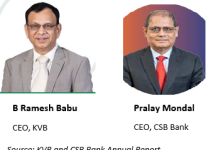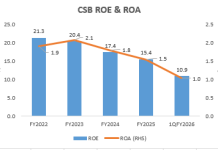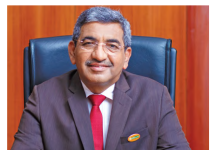EXECUTIVE SUMMARY. All indicators point to a disturbing slowdown in India’s economy in recent months: the Index of Industrial Production, the Purchasing Managers’ Index, the fixed investment rate, and even GDP. Farm prices have collapsed, resulting in negative growth in value added in agriculture; real rural wages have slumped; and reliable estimates of unemployment show a steep rise. Amid this distress, what is India’s largest government-owned bank doing?
It appears that the State Bank of India’s (SBI) current strategy is to play it safe by focusing on low-risk high-quality assets. No doubt this is music to the ears of analysts, who are ever watchful of the threat from asset quality. But the same analysts also look forward eagerly to a revival of the broader economy and demand in order to raise corporate performance, without realizing that SBI’s shift has a less benign implication in that respect. SBI’s current strategy is reminiscent of a private sector bank, whose primary focus is profit maximisation. A majority-owned government bank, while keeping its eye on the bottom line, is tasked with national developmental goals as well. At a time when the Indian economy is beset with crises in the employment-intensive agrarian and small and medium enterprise (SME) sectors, government-owned entities such as the giant SBI need to play a counter-cyclical role to stimulate employment, economic growth and private sector capital expenditure. Without the broader economic revival, even private corporate growth becomes unsustainable.
In an earlier period, the government pressed banks to lend to the capital-intensive infrastructure and corporate private sector, resulting in huge non-performing assets (NPAs); but now the government appears content to be a silent spectator as public sector banks withdraw from major distress areas in the economy. When the newly elected government takes charge, priority must be given for an expansionary fiscal and monetary policy and enhancement of bank credit to the employment-intensive, capital-starved sectors of the economy. In playing such a role, government-backed entities cannot limit themselves to short-term profits, but have to play a strategic role in lifting the nation’s economic growth.















Dear Mr. Hazari, I read your articles with great interest. Well you have put it well, that the State owned banks are in struck between the devil and the deep sea. Damned if you do and damned if you dont. I think then it should be properly documented that the role of the SOEs are to take inordinate risks in order to serve the country. They should not be compared to private banks (Well the rot as you say seems to be worse in the Private Banks than in the SOE banks). They should be apprised as such and the CVC, CBI etc should not hound them for those decisions.